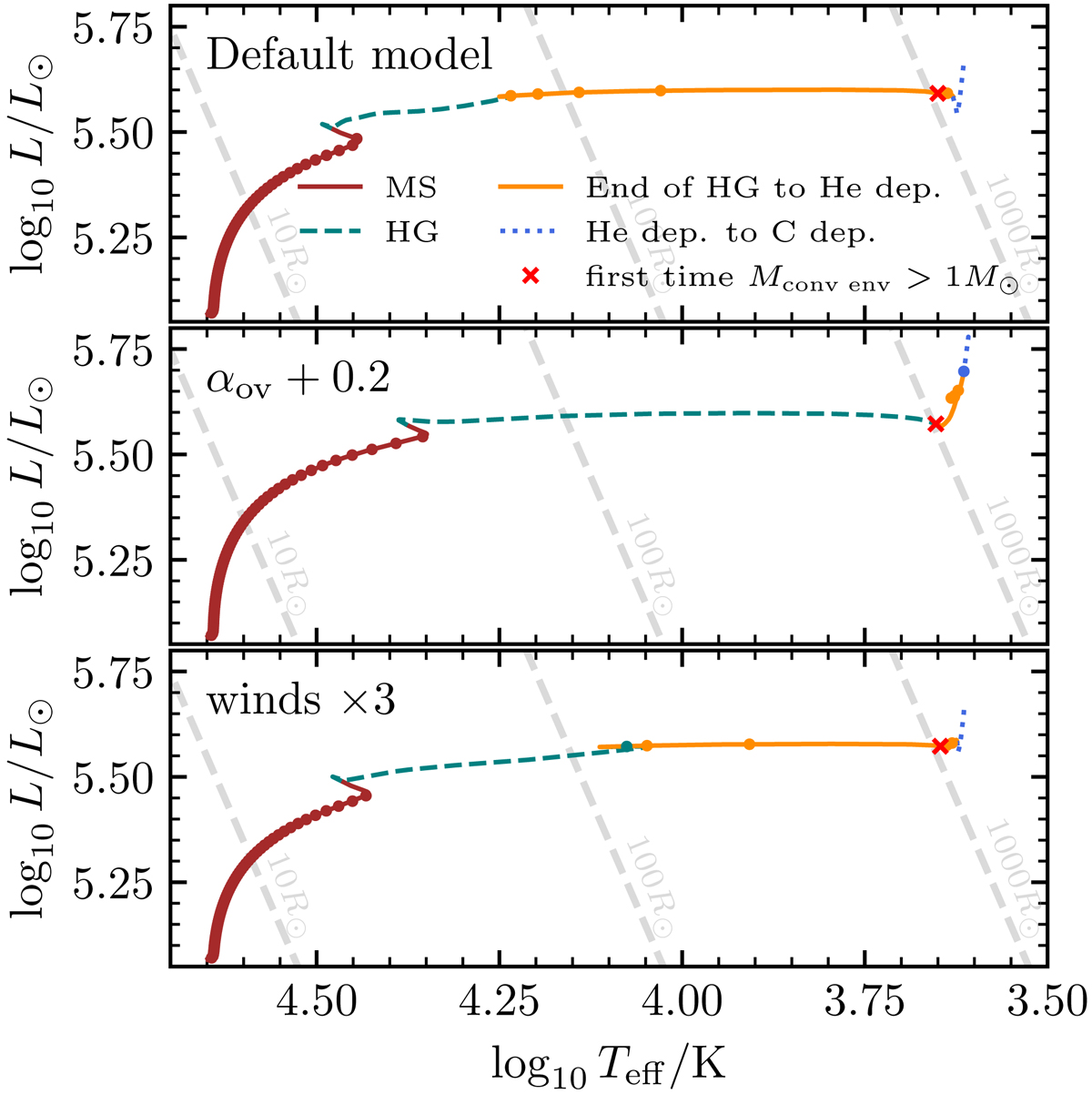Fig. 4.

Evolution of a 30 M⊙ single star with a metallicity of Z⊙/10, separated into different evolution phases. Dots indicate equal time intervals of 105 years. The Hertzsprung gap is defined as the evolutionary stage between the terminal-age main sequence and the moment where the ratio of the nuclear burning luminosity and the surface luminosity satisfies |log10(Lnuc/L)| < 0.001 for at least a thermal timescale estimated as GM2/RL, or the star develops a convective envelope > 1 M⊙. Top: evolution under our default set of physical inputs. Middle: evolution with core overshooting increased from 0.335 to 0.535 pressure scale heights. Bottom: evolution with wind mass loss rates tripled.
Current usage metrics show cumulative count of Article Views (full-text article views including HTML views, PDF and ePub downloads, according to the available data) and Abstracts Views on Vision4Press platform.
Data correspond to usage on the plateform after 2015. The current usage metrics is available 48-96 hours after online publication and is updated daily on week days.
Initial download of the metrics may take a while.


